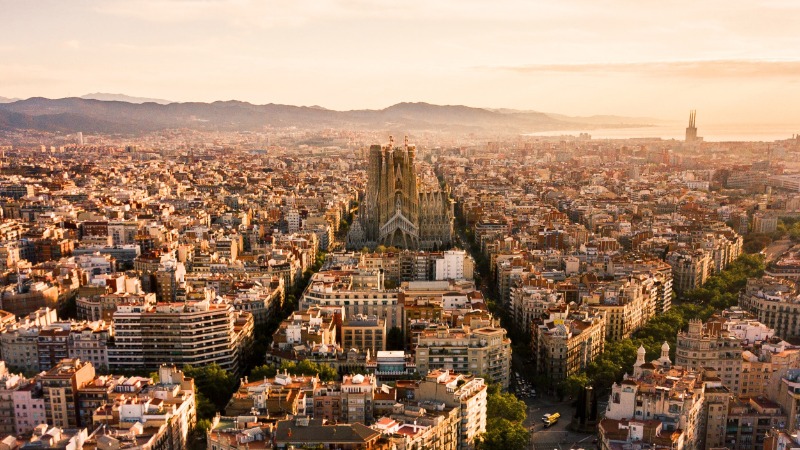News - March 10, 2020
Green buildings, a solution to fight climate change


Written by Tristan Lebleu
Why we need to make buildings carbon neutral and a few labelled Solar Impulse solutions to do so.
An entire New York City every 34 days for the next 40 years. That’s the pace at which the world is urbanizing, according to UN Environment. In total, the world is projected to add 230 billion m2 (2.5 trillion ft2) of buildings by 2060.
This rapid urbanisation poses a big challenge to the fight against climate change, as the construction sector has a tremendous impact on the environment. Buildings are big contributors to greenhouse gas emissions all along their lifecycle, from their construction phase, their usage and their demolition.
During the construction phase, most of the emissions come from making carbon-intensive materials such as concrete and steel, which could account for as much as 10 percent of the world’s annual greenhouse gas emissions. In a 2019 article highlighting its impact on the environment, The Guardian referred to concrete as “the most destructive material on Earth”.
However, the major impacts of buildings on the environment come from operations during their lifetime. Buildings need a lot of energy to run. And the more sophisticated they become with sensors and smart devices, the more energy they need. One often thinks about the electricity used for our lights as a major source of energy, but it’s actually another feature that accounts for most of the energy… The use of heating, ventilation, and air conditioning , also known as HVAC. “Using air conditioners and electric fans to stay cool already accounts for about a fifth of the total electricity used in buildings around the world – or 10% of all global electricity consumption today” according to the IEA.
Air conditioning is referred to as a “vicious circle”: the hotter the world gets, the more people need A/C installations, which in turn contribute massively to climate warming… "Growing demand for air conditioners is one of the most critical blind spots in today’s energy debate" warned Fatih Birol, Executive Director of the IEA. While there are roughly 1.6 billion air conditioning units in the world right now, that figure is expected to skyrocket to 5.5 billion units by mid-century. Supplying power to these ACs comes with large costs and environmental implications.
HVAC is obviously not the only responsible for energy demand in buildings. Refrigerators, chargers, and water heaters are also hungry for power… And last but not least there is an absurd quantity of wasted energy - from electric appliances turned on while unused, to lost heat due to poor insulation. As much as 30% of energy is wasted in US homes, according to researchers at MIT.
So, how can we make our buildings sustainable? The concept of “green building” has already gained major attention around the world, with residential and commercial buildings becoming carbon neutral, or even carbon positive. According to the World Green Building Council (WGBC), the leading authority on such matters, “a ‘green’ building is a building that, in its design, construction or operation, reduces or eliminates negative impacts, and can create positive impacts, on our climate and natural environment. Green buildings preserve precious natural resources and improve our quality of life”.
The benefits of sustainable buildings listed by WGBC are numerous: more efficient use of energy and water, use of renewable energy, waste reduction, use of sustainable materials, better air quality and more consideration for the quality of life and social interactions of its occupants. All these benefits are as much social and environmental, as they are economic. With high efficiency, less waste and renewable energy, green buildings often result in being much less costly to operate than traditional buildings.
Recognising that green buildings is key to address climate change, the Solar Impulse Foundation has labelled many solutions reducing the impact of the construction sector and buildings:
While technology holds part of the answer, ambitious policies are also required to achieve carbon neutrality in our buildings. In 2018, 19 mayors representing 130 million urban citizens, including Paris, New York and Tokyo, committed to significantly cut greenhouse gas emissions from their cities by signing the Net Zero Carbon Buildings Declaration, which ensures that new buildings operate at net zero carbon by 2030.
While technology holds part of the answer, ambitious policies are also required to achieve carbon neutrality in our buildings. In 2018, 19 mayors representing 130 million urban citizens, including Paris, New York and Tokyo, committed to significantly cut greenhouse gas emissions from their cities by signing the Net Zero Carbon Buildings Declaration, which ensures that new buildings operate at net zero carbon by 2030.
DO YOU HAVE A SOLUTION FOR SUSTAINABLE BUILDINGS?Submit your solution now

Written by Tristan Lebleu on March 10, 2020


